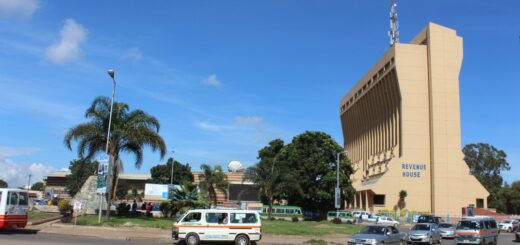TI-Z Opposes Approval Of Large-Scale Exploration Licenses In Lower Zambezi National Park
Transparency International Zambia (TI-Z) has opposed Government’s decision to approve two large scale exploration licenses in the Lower Zambezi National Park.
According to information published on the Ministry of Mines and Minerals Development website, the Mining License Committee approved two large-scale exploration licenses, namely, licenses 38439-HQ-LEL and 38572-HQ-LEL located in the Lower Zambezi National Park.
TI-Z Executive Director, Maurice Nyambe said in a statement it is disheartening to learn that the Ministry of Mines’ Mining License Committee granted two large scale exploration licenses in the National Park, in September 2024, less than a year after the decision to cancel the previous environmental approval for another mining project.
Mr. Nyambe stated that explorations and mining licensing as well as approvals, in addition to being conducted transparently, should not be approved or permitted to occur in protected areas such as national parks and forest reserves.

He further noted that prospects of mining in other protected areas remain an issue, with the Lower Zambezi being one of the most contentious preproposals in recent years.
“As the public may recall, several environmental defenders, activists and civil society actors spoke out against the previous administration’s decision to grant a mining license and environmental approval for a mining project in the Lower Zambezi National Park in 2014.”
“It was only after much advocacy and engagement with the relevant government institutions and stakeholders that last year, the current administration cancelled the proposed large-scale mining project that was designated in the Lower Zambezi National Park, a decision that was lauded by many environmental defenders, activists and concerned civil society actors, including TI-Z. Given this new development, TI-Z will continue to monitor developments with regards to these approvals, and will collaborate with other concerned stakeholders to vociferously oppose this and similar decisions relating to mining activities in protected areas,” Mr. Nyambe noted.
He observed that currently, there is neither a law nor regulation that expressly bars mining in protected areas such as forest reserves, game reserves and national parks.
“The current Mines and Minerals Development Act 2015 that provides for the application and granting of mining rights and licenses, outlines provisions on mining and exploration in environmentally protected and sensitive areas, with required conditions attached to mining rights and licenses including obtaining permission to exercise that mining right with the relevant government institutions and or agencies.”
“Among the key requirements is the environmental approval through an Environmental Project Brief and Environmental Impact Statement submitted to Zambia Environmental Management Agency (ZEMA), in addition to approval from other public institutions such as the Department of National parks and Wildlife (DNPWL) in this case,” he noted.
He has reiterated the need for government to ensure that exploration and mining in ecologically and environmentally sensitive areas is aligned with the administration’s aspiration to espouse development that prioritizes environmental sustainability and a green economy.
“Learning from the previous public outcry and environmental demerits of the previous proposed mining project, TI-Z had assumed that the issue pertaining to mining in Lower Zambezi National Park was a settled matter, and it is disheartening to see the current administration resurrect the issue and do the exact same thing for which the previous administration was condemned,” Mr. Nyambe said.








